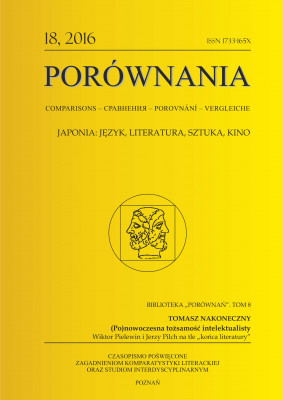On the semantic capacity of chosen words and exptressions in different contexts and their conotations
Many ways of building ambiguity can be enumerated. One of the ways is to use homonyms, associations, suggestions, or even quotes. Another way is „not to say anything” or „be silent about it”. The first way seems more concrete, even dictonary-like. The other is more intuitive and difficult to attempt to describe in a scientific manner. Both the homonymy-based language game or recalling distant associations as well as other ars poetica used as decorations in the Japanese literature or not saying something allow the reader to understand the simple image in a myriad of ways. It is fascinating that Cyprian Kamil Norwid created his works in the same style not only in the aesthetical aspect but he also raised the value of silence as an ethical basis. He was similar in this respect to the Japanese artists of the late Medieval period (XII-XVI c.) and the modernity (XVII-XIX century). The poetics of silence considered as part of speech, silence, understatement, parabole, elipse, symbol, allusion, typical for Norwid – according to Krzysztof Andrzej Jeżewski – surprisingly, without modifications allow to describe Japanese literature. Ambiguity is born out of silence – although it may sound as a paradox, it turns out to be possible.
| Article Title | Type | Size |
|---|---|---|
| 01 Agnieszka Zulawska Umeda | [pdf] | [303 KB] |
